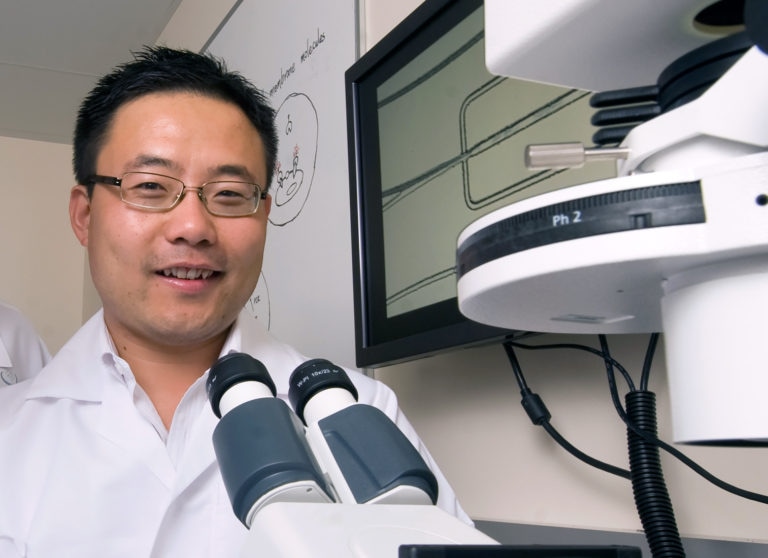According to a new study led by scientists from the University of California, Irvine (UCI), a nanotechnology treatment derived from bone marrow stem cells has reversed multiple sclerosis (MS) symptoms in mice and could in due course be used to help humans.
 “Until now, stem cell therapies for autoimmune and neurodegenerative diseases have produced mixed results in clinical trials, partly because we don’t know how the treatments work,” says Weian Zhao, UCI associate professor of pharmaceutical sciences and biomedical engineering. “This study helps unravel that mystery and paves the way for testing with human patients.” (Image credit: Steve Zylius/UCI)
“Until now, stem cell therapies for autoimmune and neurodegenerative diseases have produced mixed results in clinical trials, partly because we don’t know how the treatments work,” says Weian Zhao, UCI associate professor of pharmaceutical sciences and biomedical engineering. “This study helps unravel that mystery and paves the way for testing with human patients.” (Image credit: Steve Zylius/UCI)
Until now, stem cell therapies for autoimmune and neurodegenerative diseases have produced mixed results in clinical trials, partly because we don’t know how the treatments work. This study helps unravel that mystery and paves the way for testing with human patients.
Weian Zhao, Corresponding Author and an Associate Professor of Pharmaceutical Sciences and Biomedical Engineering, UCI
He is affiliated with the Sue & Bill Gross Stem Cell Research Center.
In earlier experiments, intravenously injected stem cells – gotten from bone marrow and stimulated with interferon gamma, an immune system protein – frequently became trapped in filter organs before reaching their target. For this research, published in the journal ACS Nano, scientists evaded that problem by extracting nano-sized particles known as exosomes from the stem cells and injecting them into rodents having MS.
Full of anti-inflammatory and neuroprotective RNA and protein molecules, the exosomes could slip through the blood-spinal cord barrier. Besides rejuvenating lost motor skills and reducing MS-related nerve damage, they normalized the subjects’ immune systems, something conventional drugs cannot accomplish, said research co-lead author Reza Mohammadi, a UCI doctoral candidate in materials science and engineering.
Going forward, more experiments have been planned.
“This novel treatment will be tested on humans in early 2020, initially on people with Type 1 diabetes,” said co-lead author Milad Riazifar, who worked on the research as a pharmacological sciences doctoral student in Zhao’s lab and is presently assisting in the preparation for a City of Hope clinical trial of the technique. “If successful, it could pave the way for treating other autoimmune diseases, including multiple sclerosis.”
Other UCI scientists involved were Egest J. Pone, Aude I. Segaliny, Laura L. McIntyre, Ashley Hamamoto, Erika N. Calle, Wenbin Liao, Victor Pham, Jayapriya Jayaraman, Jonathan R.T. Lakey, and Craig M. Walsh. The National Institutes of Health, a National Institute of Neurological Disorders and Stroke training grant, an Otto W. Shaler Scholarship and France’s ARC Foundation for Cancer Research offered support for this research.

